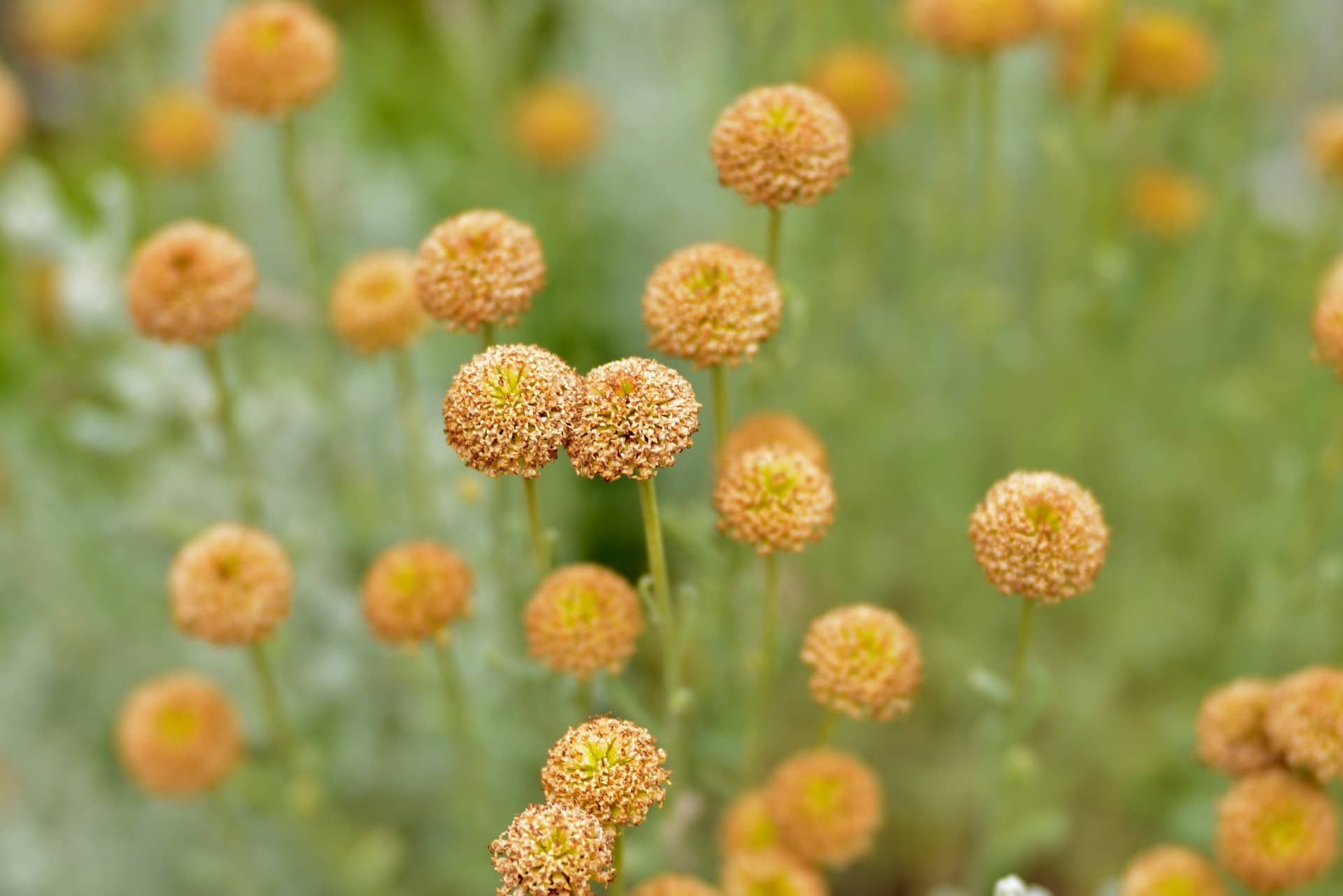A skill that you shouldn’t miss out on is how to grow craspedia because you can simplify it into planting and maintenance. Billy buttons or woolly heads are a unique drumstick-looking part of the daisy family that should make any garden or greenhouse pop out. It is an Australian and New Zealand native, but even though craspedia is common in woodlands and dry forest conditions, a greenhouse should make it easy for you to cultivate them.
Greenhouse gardening and knowledge in hardiness zones would give you the management and cultivation practices for craspedia that thrives in zones 9 to 11. Depending on your location, you can adjust the greenhouse’s indoor conditions to these beautiful tennis ball-like flowers’ ideal requirements. Afterall, drumstick flowers are not even challenging to grow as long as you prepare beforehand.

How To Grow Craspedia Successfully
Craspedia is somewhat the embodiment of a newbie gardener’s dream plant. It doesn’t have any special requirements and tasks for it to thrive well. It is even resistant against drought, pests, and diseases. The only thing you are responsible for is proper planting and maintenance, and you can even get some help with them by using a greenhouse.
Planting
Craspedia thrives in USDA-rated zones 9 to 11 or even 8 to 11 as a tender perennial. However, some gardeners noted that you could also grow them as annuals. Regardless, you can propagate the Billy button seeds in spring or summer.
Starting seeds
You can also use division for these flowers, but sowing seeds is a more comfortable and common practice. You can sow craspedia in late February or early in March, depending on your area, since you’re waiting for the frost’s threat to pass. The process is relatively quick since you’ll be sprinkling seeds and raking the surface or using vermiculite to cover them.
The seeds should germinate in three weeks or earlier, and starting them in the greenhouse should support their growth without issues. Remember that seeds are vulnerable to failing germination under fluctuating conditions. It would also be best to remember using a well-draining soil since craspedia is not that picky.
Transplanting
Once you notice that the seedlings are mature enough or have their second set of true leaves, they are ready for transplanting into a larger container. But before you transplant outside, make sure that the last frost has passed and you have hardened them off. What are the site requirements to support bloom and growth?
Craspedia will thrive in an area that receives full sun around 6 hours to help them bloom well. Space the plants 10 to 12 inches apart and remember that you should be putting them in the same depth but twice the original holes’ width. Some plants may also need support until they’ve straightened their stems after transplanting.
Maintenance
Depending on your craspedia variety, these plants can take 50 days to mature with a peak harvest period of 80 to 115 in crop days. You have a harvest window of 70 to 80 days, so proper maintenance and maintenance will be crucial parts of your success. The good news is that craspedia is relatively easy to grow, and if you’re using a greenhouse, meeting the flowers’ requirements should be convenient.
Watering and feeding
Much like most plants, only water the soil if the top inch layer is dry. After all, Billy buttons are tropical, which means they can tolerate drought well. Another convenient part for the gardener is that you can fertilize at the beginning of the growing season and incorporate compost while planting to provide the plant nutrients.
Afterward, additional fertilizer is unnecessary since these plants are not heavy feeders. Applying a slow-release fertilizer might be the only thing worth taking note of to encourage growth during the growing season.
Mulching and how to care for craspedia
It’s best to mulch craspedia with gravel to keep weeds at bay and maintain healthy roots. On the contrary, a common practice in flowering plants, deadheading, is something you can skip with craspedia. They are generally available year-round with blooming seasons during spring and summer, but maintenance is more straightforward because deadheading isn’t necessary.
You will also be pleased that craspedia is not prone to pests and diseases. It is tough against common critters like snails, slugs, and spider mites. Still, be diligent, and prevention is necessary to keep bugs out of the greenhouse.
Conclusion
Craspedia plants are eye-catching golf-like flowers that every gardener must-have. More so, learning how to grow craspedia isn’t even complicated and overwhelming since they are tough and resistant plants. They can tolerate drought and are not prone to common pests and diseases.
What more can you ask for? Planting and maintaining craspedia is so simple that even newbie gardeners won’t risk making mistakes. However, you can always start your seeds in the greenhouse or grow the plants themselves indoors if your location seems unideal for Billy buttons.
You only need to learn your area’s growing zone to adjust the internal conditions and know when to plant craspedia without the danger of frost. The plants are not picky with soil and should thrive well in sunny locations. Afterward, there are no special requirements with feeding and watering, and you don’t even need to deadhead the flowers.
